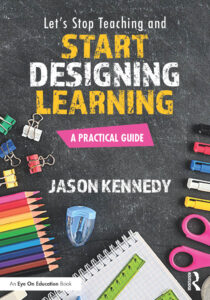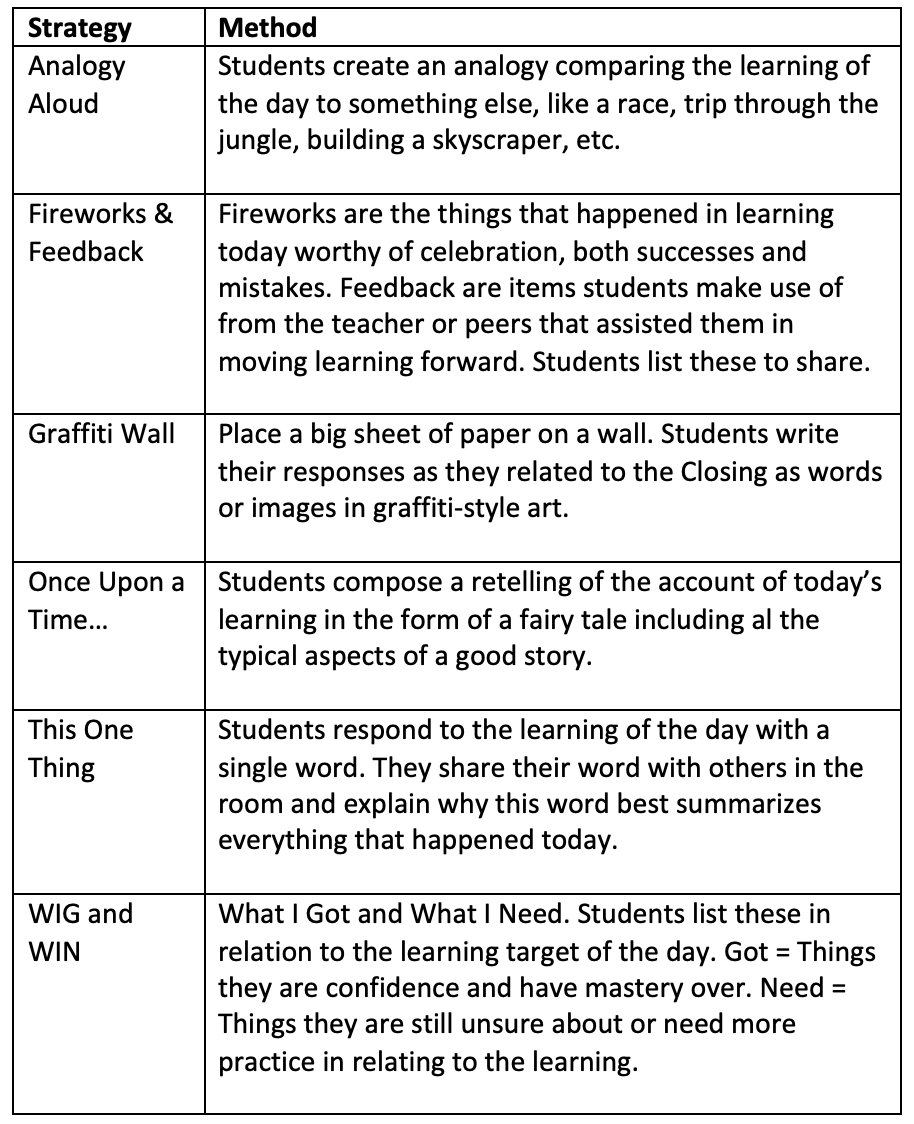A How-to Guide to Better Engage Your Students
Let’s Stop Teaching and Start Designing Learning: A Practical Guide
By Jason Kennedy
(Routledge/Eye On Education, 2023 – Learn more)
Reviewed by Cathy Gassenheimer

I’d answer yes to all those questions and more. So when several books arrived in the mail for me to read, one stood out:
► The cover was engaging: bright primary colors with a black background that looked like it might be a blackboard.
► The title stopped me in my tracks: Let’s Stop Teaching and Start Designing Learning: A Practical Guide. The title fed my curiosity and interest.
► The fact that it was sent to me by my good friend and MiddleWeb co-editor John Norton made this book a trifecta! It moved to the top of my large stack of books to read.

According to his bio, his “passion lies in taking the evidence of effective learning and being successful in sharing it in ways that are accessible to the everyday teacher.”
Resource-Laden and Practical
The book is a no-frills, how-to book full of ideas along with Kennedy’s passionate views about student engagement and learning. A quick review of the table of contents provides a roadmap for interested readers.
After the introduction and overview of the book, there are eight chapters, including an abundant treasure trove of resources (chapter 8):
Chapter 1: Why We Need to Stop Teaching
Chapter 2: What Does Stopping Teaching Require?
Chapter 3: Start Designing with the End
Chapter 4: The Opening
Chapter 5: The Work Session
Chapter 6: The Instruction
Chapter 7: The Closing
Chapter 8: Tips, Tools, and Templates
A Bit of Preaching and Lots of Practical Suggestions
The reader will notice that Kennedy is a strong believer in actively engaging students in their learning. In fact, his definition of “teaching” singles out the stand and deliver mode that so many of us endured for special criticism. His argument against this tried, but not necessarily true, mode is five-fold:
1. It’s passive. He describes walking into too many classrooms where learning “is hidden…Compliance is king. It looks good on the outside, desks in rows, quiet, work being completed, but where is the learning?” (p. 10)
2. It’s not engaging. Kennedy compares the traditional classroom to one that includes “opportunities to collaborate, tasks that make learning visible, dialogues surrounding the material, and practices that promote mutual accountability” (pp. 11-12).
3. It can cause misbehavior. Students who are expected to sit still and listen usually play the game of school (“I’ll be compliant and still if you leave me alone”) or their “brains find other ways to do those things that may not involve learning” (p. 13). Reading this, I remember a colleague who taught middle school science saying, “I don’t have discipline problems because (and only because) I keep my students engaged.”
4. It doesn’t prepare students. Kennedy adds the two words, “not really,” to this reason. He points out that in a traditional classroom, the teacher does the most work, while the students compliantly listen. As we have all learned, those who do the most talking, often do the most learning.
5. It provides equality, but not equity. One-size fits all delivery doesn’t serve the needs of all students. Instead, Kennedy argues that designing learning can help ensure equity. He paints a picture of learning “that is rigorous for all with high expectations for all,” where real-world connections are made, and where students “can see themselves in the things they learn in school” (p. 19).
The Model
Kennedy is a strong believer in beginning with the end in mind. As such, he believes that planning on the front-end will result in better learning for students and more enjoyment by the teacher.
Much of what Kennedy advocates can be found in books about best practice: Berger’s Leaders of Their Own Learning, books by Fisher and Frey, and the work of Hattie, Marzano, Fullan and others.
Key components include:
• Building relationships and trust in the classroom.
• Designing learning so students are engaged and can tell you what they are learning by the use of learning targets, success criteria, and embedded formative assessments.
• Using learning protocols and effective collaborative learning strategies.
• Employing checks for understanding – both planned and in the moment – and providing just-in-time feedback.
• Using questioning, both to engage students and to deepen their thinking and understanding.
• Planning closing activities to reinforce learning and encourage students to reflect on what they’ve learned and on next steps.
Useful Tools
The book is chock-full of examples, protocols, and ideas. Because the idea of intentionally closing each lesson may be new to some, Kennedy offers 15 different strategies. I’ve boxed up some of the strategies that I find to be particularly interesting (pp. 160-161):

Added Bonus
Jason Kennedy also has a website where you can find additional resources, including a blog and podcasts.
If you are like me, you have lots of books you want to read, but wonder when you’ll find the time to read ALL of them. Fortunately, the cover, title, and the recommendation from a friend moved Let’s Stop Teaching and Start Designing Learning to the top of my list. This how-to guide will help you better engage your students by spending more time on the front-end of planning, and you’ll reap the rewards that come with better student learning and behavior.
Cathy Gassenheimer is a professional learning consultant specializing in collaborative adult learning and collective efficacy. For 22 years she was Executive Vice President of the Alabama Best Practices Center, a program of Alabama’s statewide nonprofit A+ Education Partnership, and led the work of three statewide educator networks focused on teaching, leadership, and instructional coaching. Connect with her via LinkedIn and on X-Twitter @cathygassenheim.



































